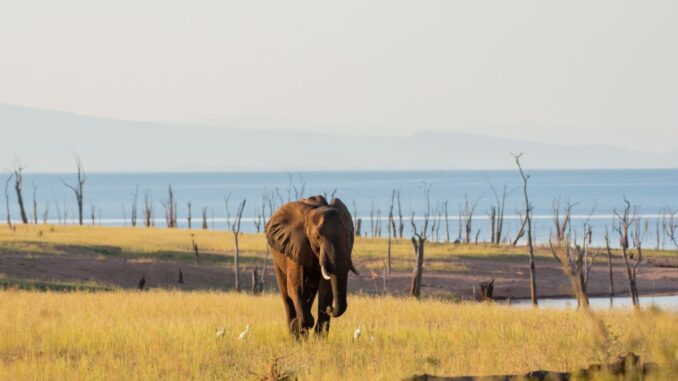
This year, getting out on foot in Zimbabwe’s Matusadona National Park is easier thanks to the launch of several new overnighting options. The park, on the southern shore of Lake Kariba, has been managed for five years by the Matusadona Conservation Trust (MCT), a joint venture of African Parks and the Zimbabwe Parks & Wildlife Management Authority; last year we featured the very positive phenomenon that is African Parks, an NGO that has been working for a couple of decades to rehabilitate off-the-beaten track national parks and reserves. Once involved, the organisation tends to follow a proven development model, starting literally with the groundwork: improving park roads and building staff facilities while developing management plans, training rangers and stopping poaching. The next stage is wildlife reintroductions, and, all going well, the park is then ready for the enhancement of tourism infrastructure, to attract more visitors and income to sustain the endeavour. And that’s the stage that Matusadona has now reached.
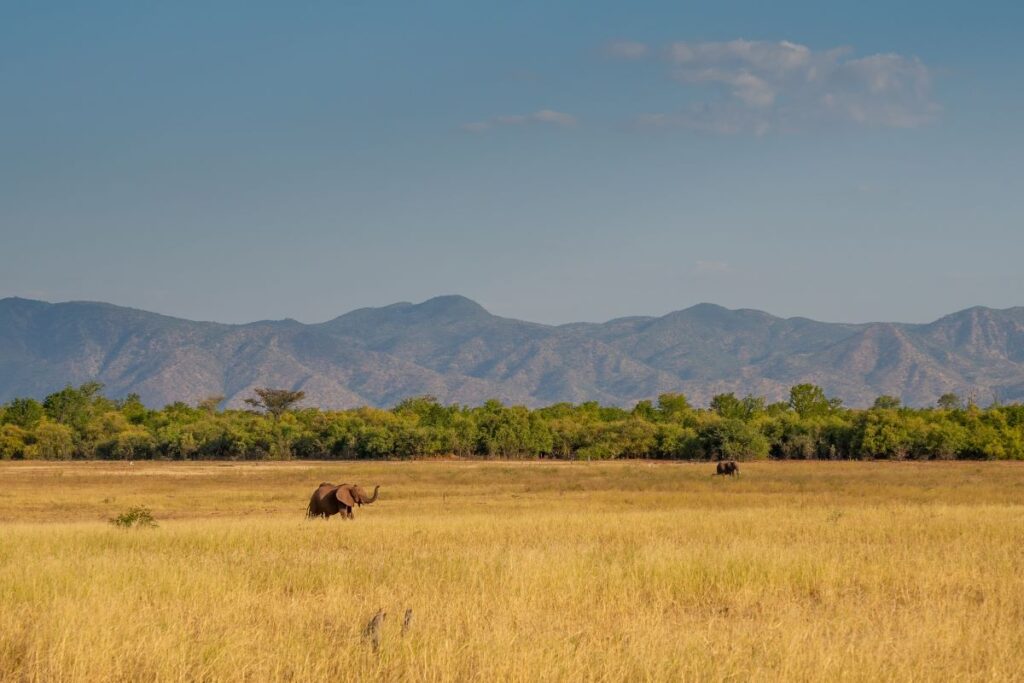
Alongside the park’s handful of licensed lodges, the MCT now offers a fine choice of accommodations ranging from self-catering camp sites to comfortable cottages and even a couple of sleep-out platforms, and all can be utilised as walking bases, with guests guided by MCT’s resident professional guides. Combined with successful wildlife restoration projects, this widening of the choice of accommodation is a positive development that will further position the park as a real safari destination that attracts international wildlife tourism, rather than just a fishing and R&R destination for the local market.
Let’s look at the accommodation range. The well-appointed Tashinga Cottages are located beside the park’s lakeshore headquarters in the west of the park, and guests can either self-cater at a fully featured kitchen or avail of a cook and meal plan. There are three cottages, with a couple more to be added next year. Nearby is a camp site with shared ablutions, and there’s another site inland at Maronga; camping visitors can either bring in all their own kit or arrange with MCT to supply and erect a tent. MCT can even provide a cook and camp attendant for laundry and other camp duties.
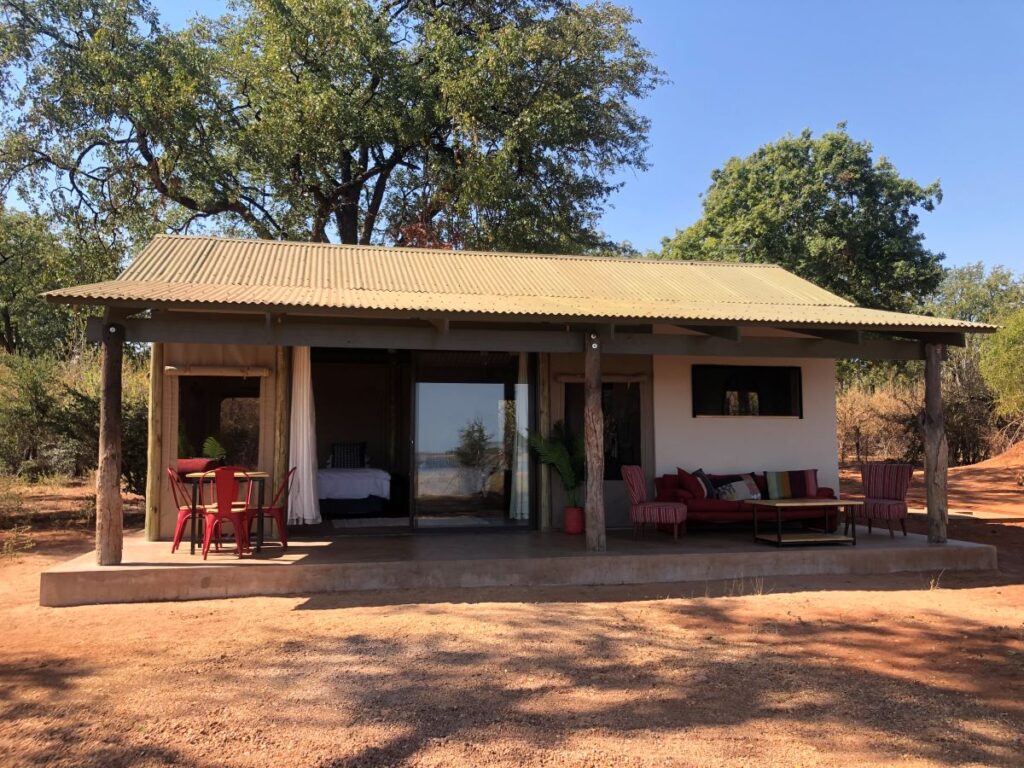
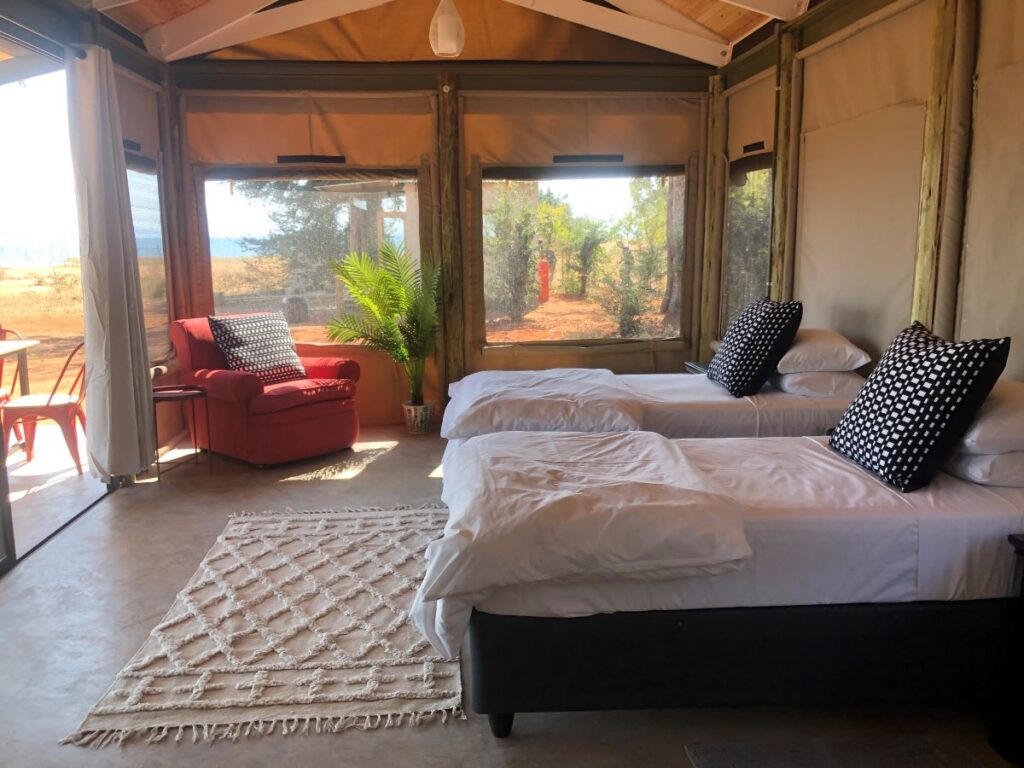
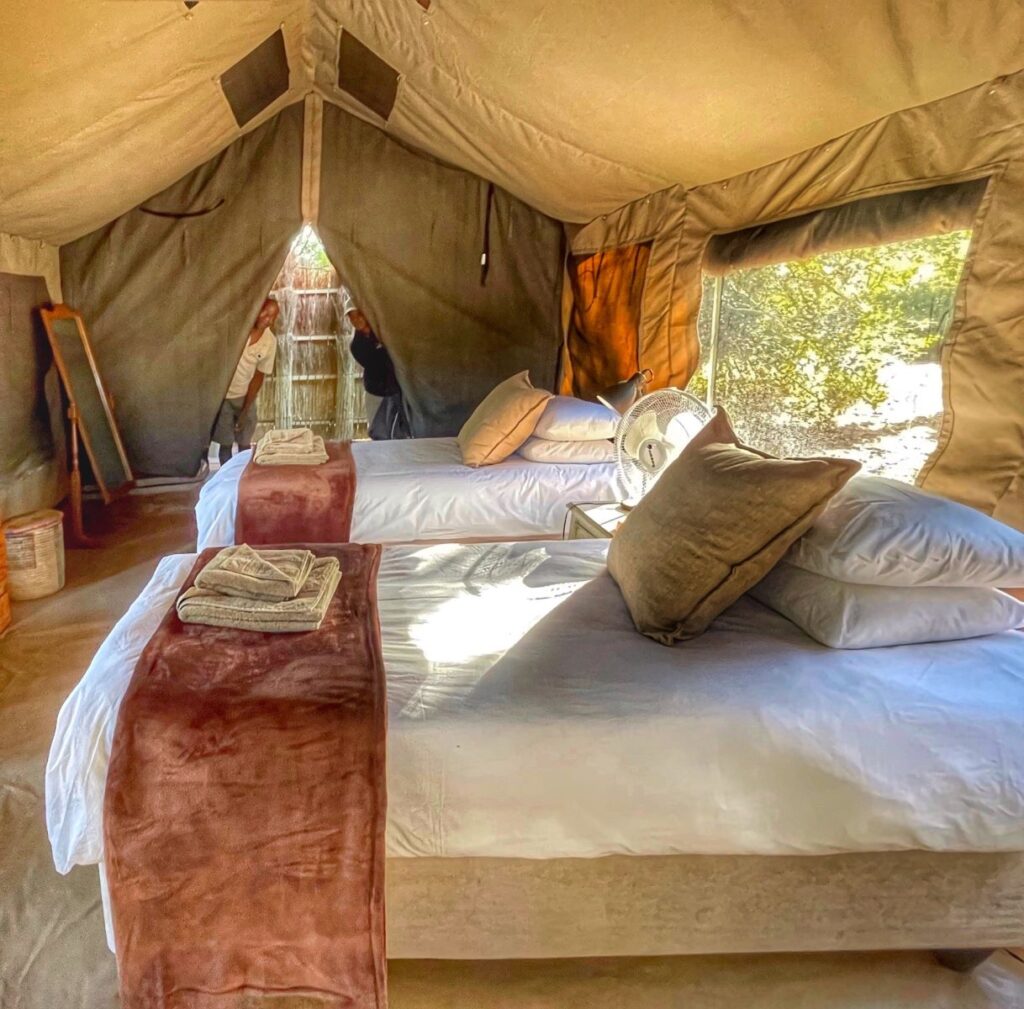
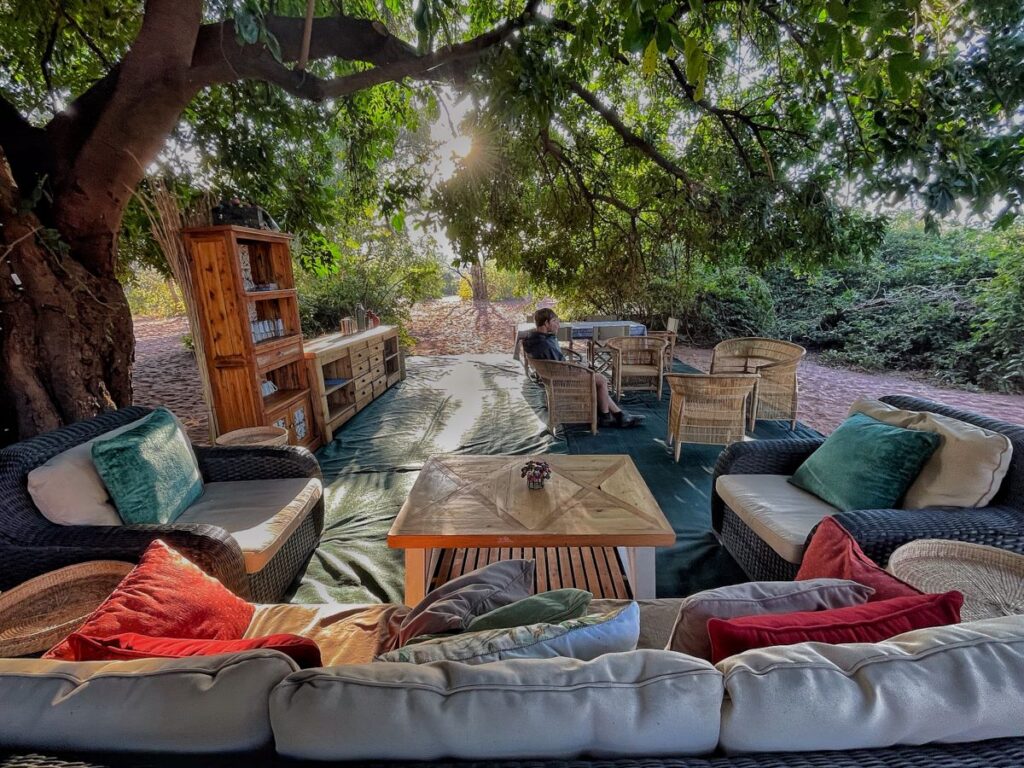
For groups of a minimum of four, the ideal choice is Matusadona Bush Camp which is designed to relocate seasonally as dictated by wildlife movements. During the peak walking season, it is set inland at the game-rich confluence of the Biriwiri and Jenje rivers and in the wet months from November to March it is located on a picturesque lakeside setting. It sleeps 12 in six large tents in the East African style, all with en suite bathrooms with hot and cold running water. The camp is fully catered and booked on an exclusive basis and guests can decide the daily activity, mixing drives, walks and boat safaris. The cottages, campsites and bush camp are all bookable year-round, and in the dry season an interesting alternative is to sleep out on one of a couple of a game viewing platforms that overlook inland springs.
The terrain of the park makes for a good variation of walking habitats ranging from the very open plains along the lake shore, overlooking the famous kilometre-wide drowned forest, to exploration of the rivers that meander from the escarpment. A unique feature of the park is the proliferation of perennial springs – there are at least 74 – so these sand rivers often run in sections of crystal clean fresh water which attract a large array of wildlife.
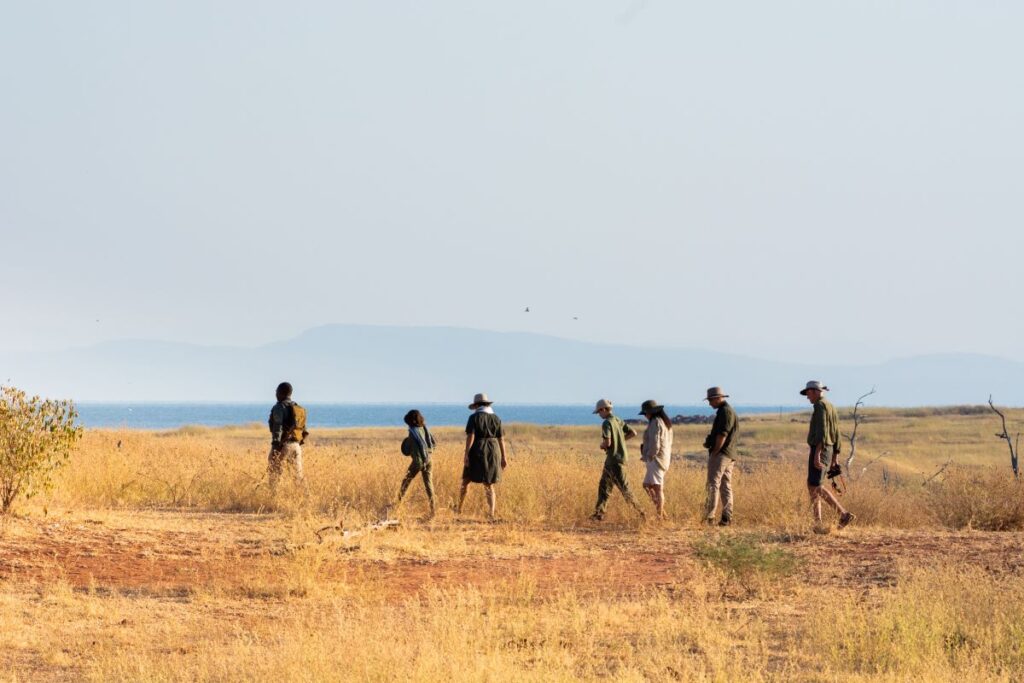
For the fit and adventurous, backpacking expeditions up onto the escarpment are an option: heading out for anything from one to seven nights, groups determine their own routes and camp locations and must be fully self-sufficient, and kit should include camp stoves, food, lightweight tent and sleeping bags, and at least four litres of water carrying capacity. The walking activities are overseen by Mike Pelham and Chrispen Chiparaushe, both graduates of Zimbabwe’s renowned Professional Guide training system.
Matusadona will never be as easy to access as Hwange or Mana Pools, but that’s a big part of the attraction: it’s a place where it’s possible to disappear into the bush for several days and not see another human. In the coming years, the resident lion, elephant and buffalo populations will be joined by cheetah and walkers will also again find the tracks of endangered black rhino – the hope is to give them a safe stronghold here.
Guests with their own vehicle (or boat) can reach the park via a long and rough drive, or by chartered ferry from Kariba town. The easiest access is by air, and seat-rate flights are available through both Falcon Air and Mack Air to Tashinga and other airstrips from where MCT can arrange pick-up and then look after guests for the whole stay. For further information and reservations email reservations.matusadona@africanparks.org or WhatsApp +263 (0)773 740 333.
Images courtesty Matusadona Conservation Trust

Leave a Reply